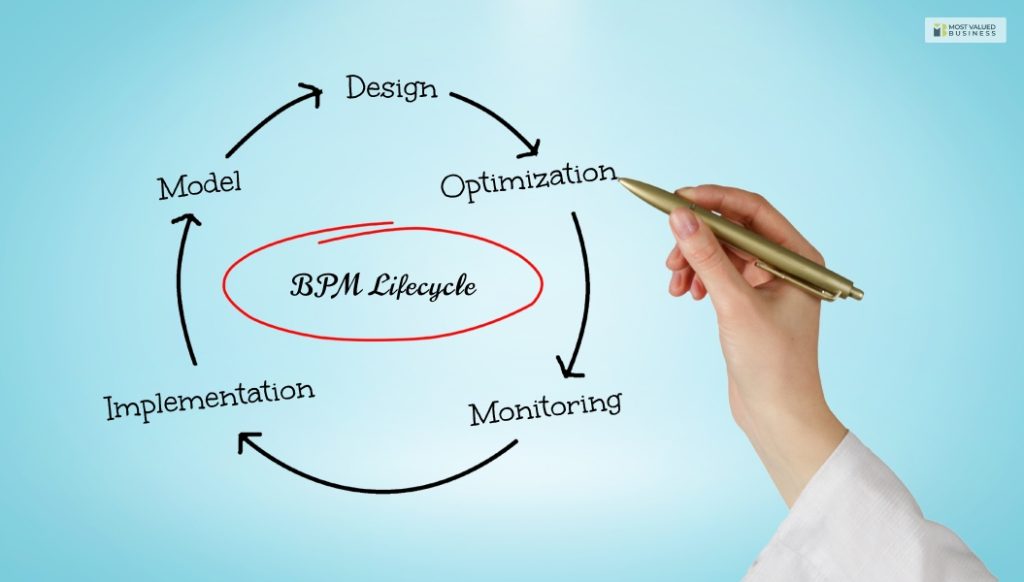Business Process Management- All you need to know!!
We know BPM is the backbone of all businesses. But here, the terms suggest an automated AI and Power BI patronized multi-niche platform. It is vital for all-round business management needs.
What is business process management?

It is a highly structured approach for improving how we work in an organization. Moreover, it influences our customer service strategies and business values, too.
Definition of BPM
Gartner defines business process management as an approach to optimize our business strategies. It includes various methods of discovering, analyzing, modeling, and improving the business strategies used.
Scope of BPM compared to task and project management
There are broad differences between BPM, task management, and project management.
BPM focuses on strategies required to execute a business process, end to end. However, task management is different. Its zone of focus is only a single task. Similarly, the scope of PM is also limited to the time-bound project.
BPM is much different from the other two. BPM can focus on repetitive projects, too.
Importance of BPM in streamlining workflows and achieving efficiencies
How does BPM ensure better process planning?
Firstly, it brings new approaches and technologies to the table. For instance, BPM can automate stressful and recurring activities.
Employees can focus beyond data management, data entry, and other such tasks.
They can handle the strategic part of it, like assessing outputs and evaluating new methods of operations.
Stages of the BPM Lifecycle

BPM, as we learned, plays a crucial role in making an organization more efficient. Let’s get to know the processes that complete the BPM.
1. Process Design
It’s the first step. Process design is the same as checking existing business processes. Experts say that you can plan new automation and achieve standardization of operations.
2. Process Model
Process modeling is the next step after planning. So, you must passively observe the performance of the business processes after redesigning.
3. Process Implementation
It’s the most crucial stage so far. Here, you are entitled to execute the automation and standardizations planned in the design stage.
4. Process Monitoring
Again, this is another stage of passive observation. Here, we will track the improvements after the implementation. We can also apply specific performance metrics to track improvements.
5. Process Optimization
It is a dynamic step. We must continue the steps taken so far, as needed, and ensure business process improvement.
Business Process Management Benefits

BPM follows a structured approach, as discussed above. We also know it improves the current business processes. Now, let’s elaborate on the benefits of BPM to a business.
Increased efficiency and cost savings
What do we mean by an increase in efficiency?
The error rates should be reduced. The deliverables will be delivered faster. They would also require less monitoring. Certainly, the precision of deliveries should also improve.
Experts also say that BPM can bring down operating costs in many ways:
- Reducing overhead costs by optimizing and automating a certain extent of the operations
- Reduce costs due to manual error
- Reduce additional costs due to delay
Enhanced employee and customer experience
Let me land a scenario here for better understanding.
The HR dept introduced the BPM recently. As a result, the employee timesheets are now approved faster.
Hence, all employees have clarity about their deliverables. Experts also say that the lack of regulation and direction can demoralize employees. However, employees are motivated when they get proper direction and guidance.
BPM can also align the real-time needs of customers with existing business processes.
It means better customer satisfaction.
The domain of multichannel retail in the US sees new customer demands daily. BPM can track these changes before they become apparent.
It helps retail brands to introduce new strategies to adapt to customers’ needs.
More scalable processes
The quality of process execution gets a boost when you use BPM. At the same time, BPM can help in automated workflow.
Automation helps in scaling the business to other territories.
You do not need to change the business process every time manually. Just track the incumbent changes in business requirements.
BPM tools help in ensuring role clarity. So, you can easily control a cross-border team. You have BPM to streamline their performance. As a result, you can make your business more scalable outside the home country.
You can easily set up physical operations units in foreign countries.
Greater transparency
Business process managment helps with role clarity. It also allows employees to take better ownership of their tasks. As a result, employees are more accountable for their work.
Less dependency on development teams
We know what is bpm process. But we don’t know that any of your employees can learn the nimble business process management tools quickly. Hence, most employees can control automation systems, which include business process management.
Business Process Management Use Cases

Here, we have a big question. After learning business process management what is its most expected use case?
Content distribution
It’s not enough to define business process management. We must see some real examples of process optimization using business process management.
The Media industry can use BPM for content management, editorial checking, content rights, and content traffic management.
So, employees can focus on setting better content strategies.
Customer service
To improve customer service, BPM plays a key role. It filters FAQs from chatbots to enhance the quality of responses that customers receive.
Types of BPM
- Integration-centric BPM– focuses on workflow integration, hence reducing human interventions and automating enterprise applications.
- Human-centric BPM– features tools like real-time notifications, alerts, and easy UI to improve the process flow that people deal with on an everyday basis.
- Document-centric BPM– focuses more on formatting, verifying, and authorizing documents without human intervention.
BPM Best Practices

Most US-based companies invest in business process management, meaning its spread will have a fathomable influence on all sectors soon.
Focus on business operations and organizational management
BPM helps align the company’s business goals with the current resources used. So, it helps in resource management and operations management at the same time.
Establish a BPM Center of Excellence
It is a solution that big and emerging companies might consider. It helps them to manage a multidisciplinary team working on a dynamic range of areas.
Implement a formal BPM methodology
Many companies use BPM to manage expectations. To explain business process management in various companies. You must check their business goals and KPIs.
So, most companies align their BPM to formalize the business processes.
Other best practices of BPM are:
- Utilize simulation modeling
- Incorporate performance measurement with defined KPIs
Benefits of Business Process Management

According to bpm business process management definition, BPM is a structured approach that most US companies use.
However, let’s get down to the individual benefits that make BPM invincible in this market.
Improved quality of work and operational efficiency
A synchronized business process management can reduce waste, save costs and make their companies more agile.
Waste elimination and error reduction
By regulating data flow, business process management can reduce human error certainly.
Time and cost savings
business process management can do the tedious and monotonous repeating tasks. At the same time, BPM helps in saving the additional time taken by humans during data processing and Stategic thinking.
The other statutory benefits of business process management are:
- Compliance improvement
- Agility enhancement
- Support for digital transformation
- Delivery of better products and services to customers
Wrapping up……..
Are you determined to improve your business process management game?
There are any friendly and free tools. We already know that business process management tools are simple and uncomplicated. So, all employees of your company can use the tool for automating their respective actions.
Most business process managements are low code platforms, easy to use.
The US uses BPM across versatile needs. However, IT, retail, and HR have the most robust business process management use cases.



